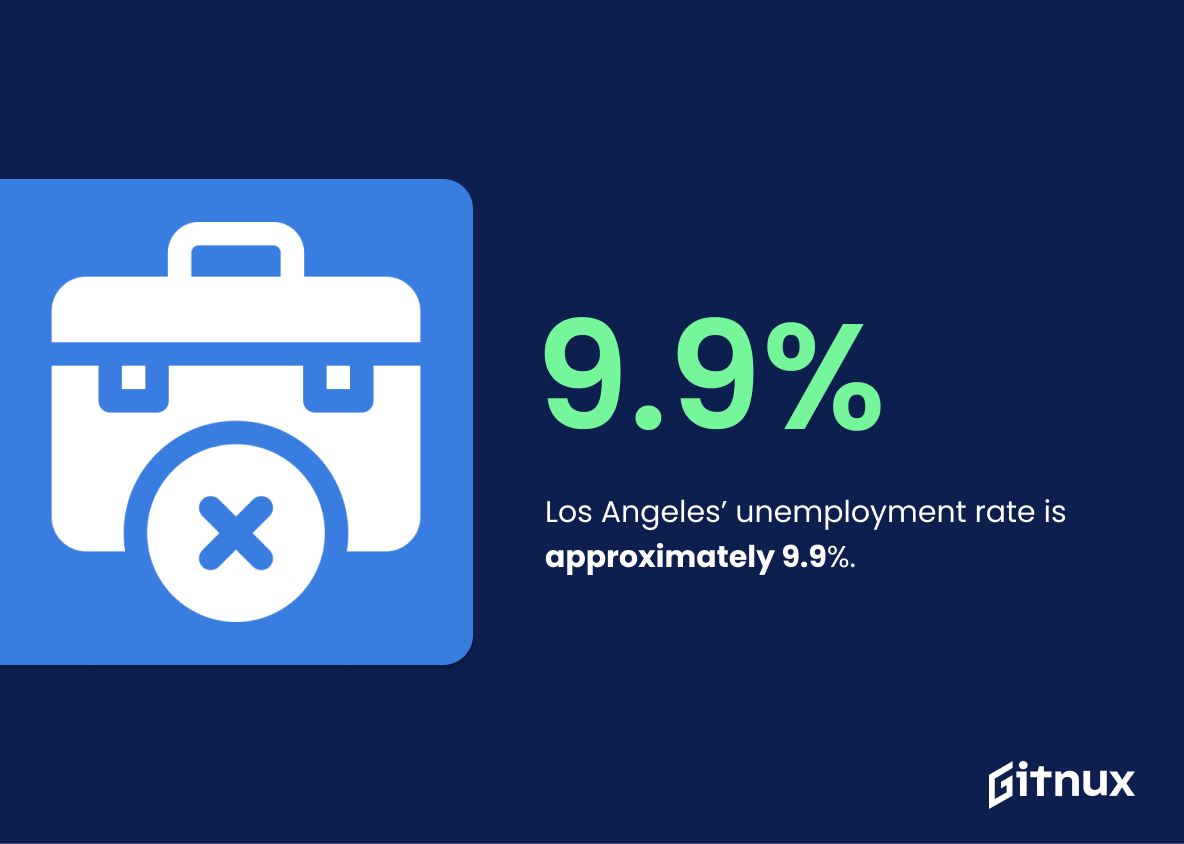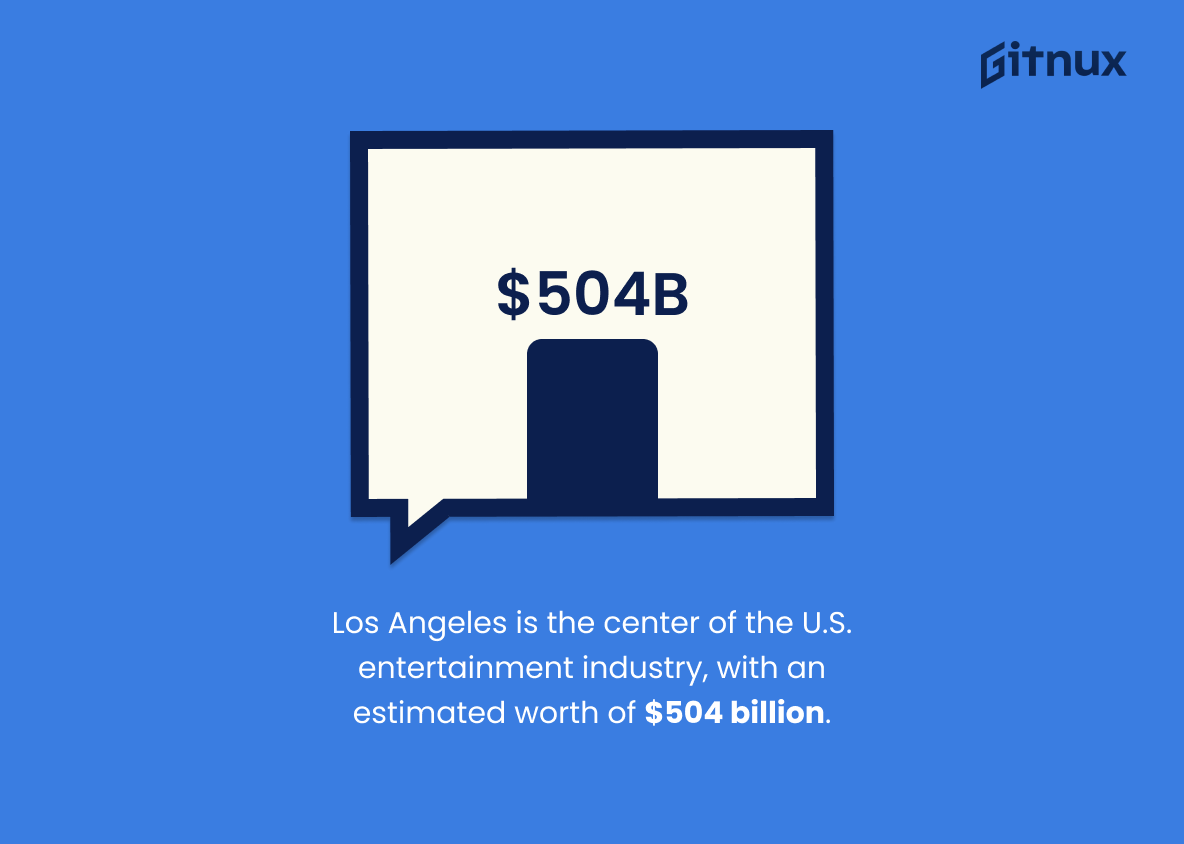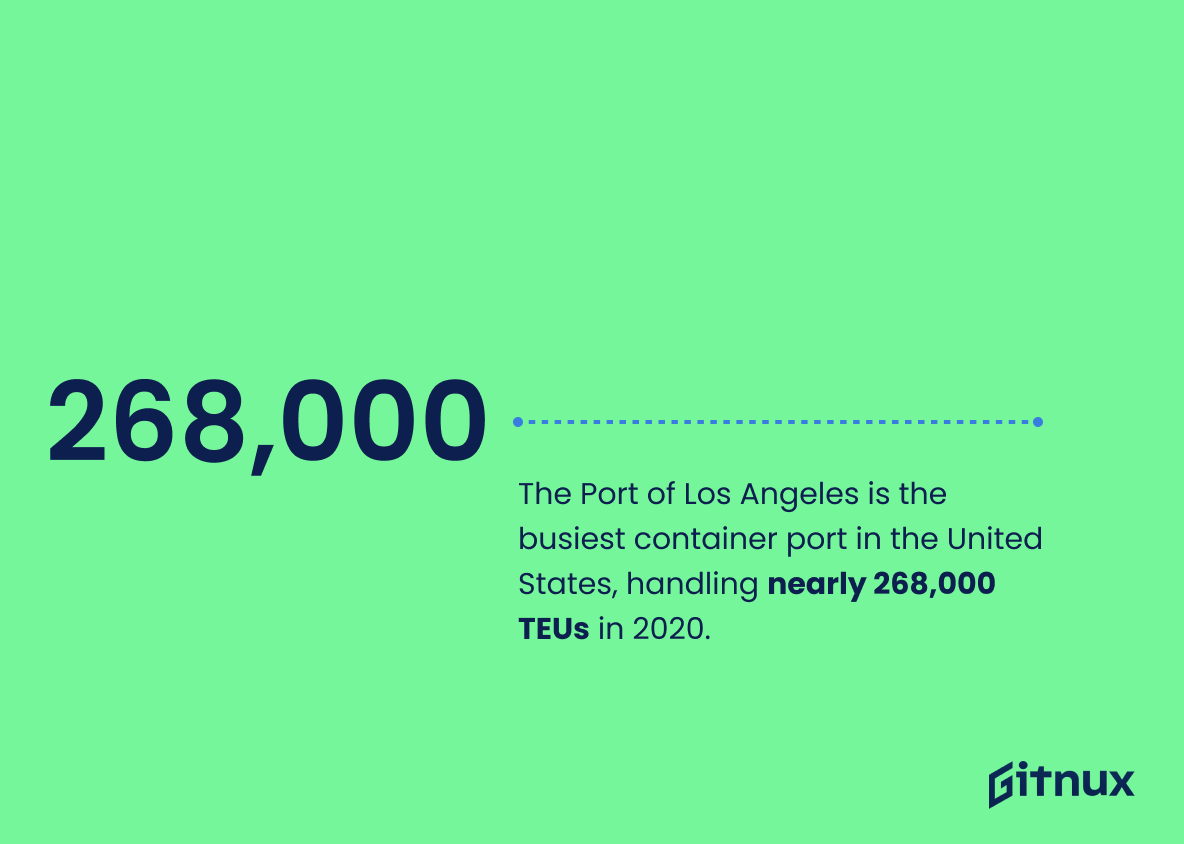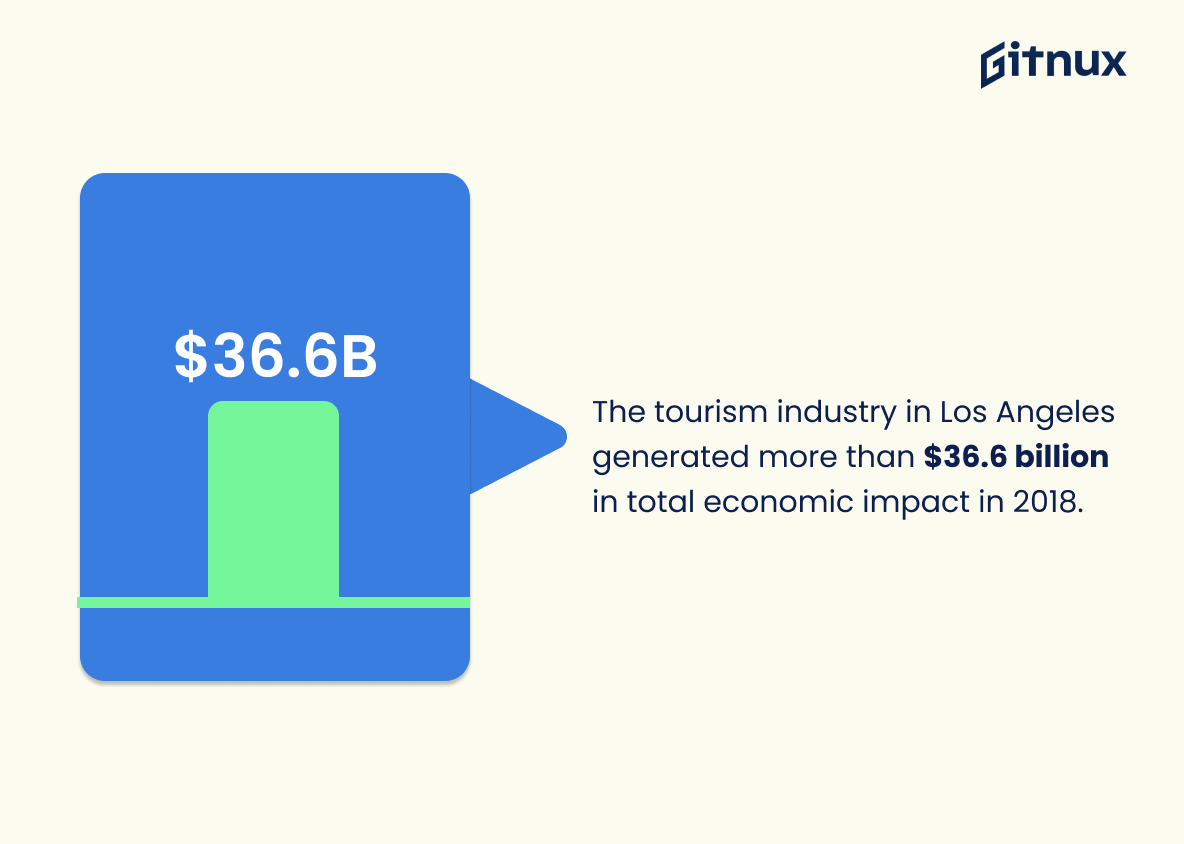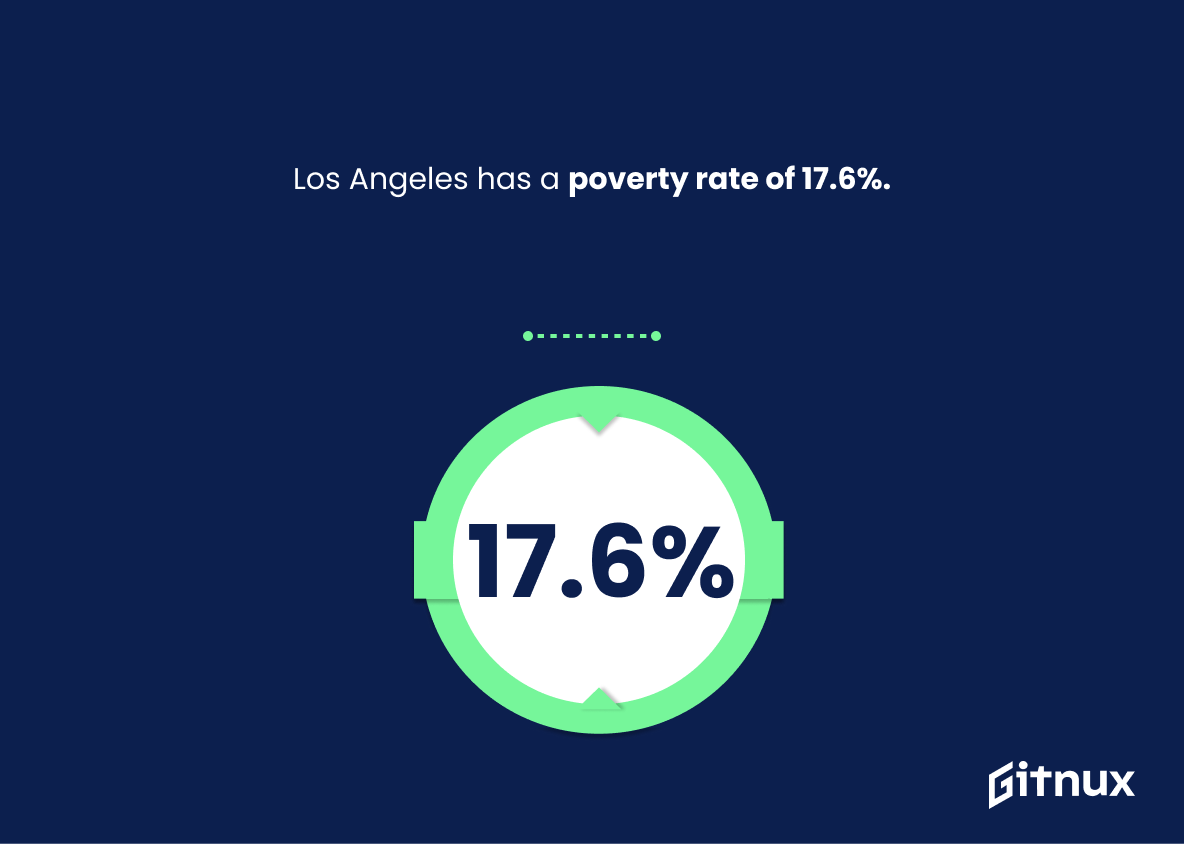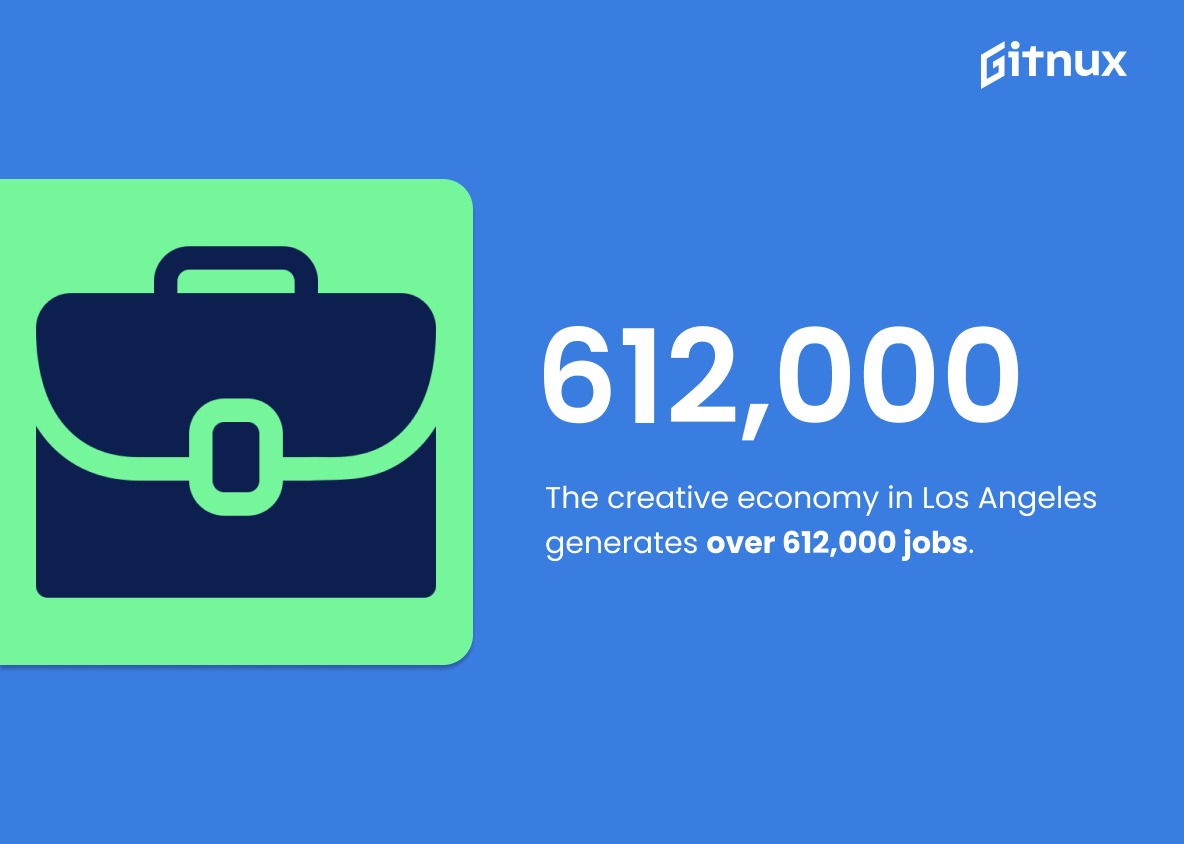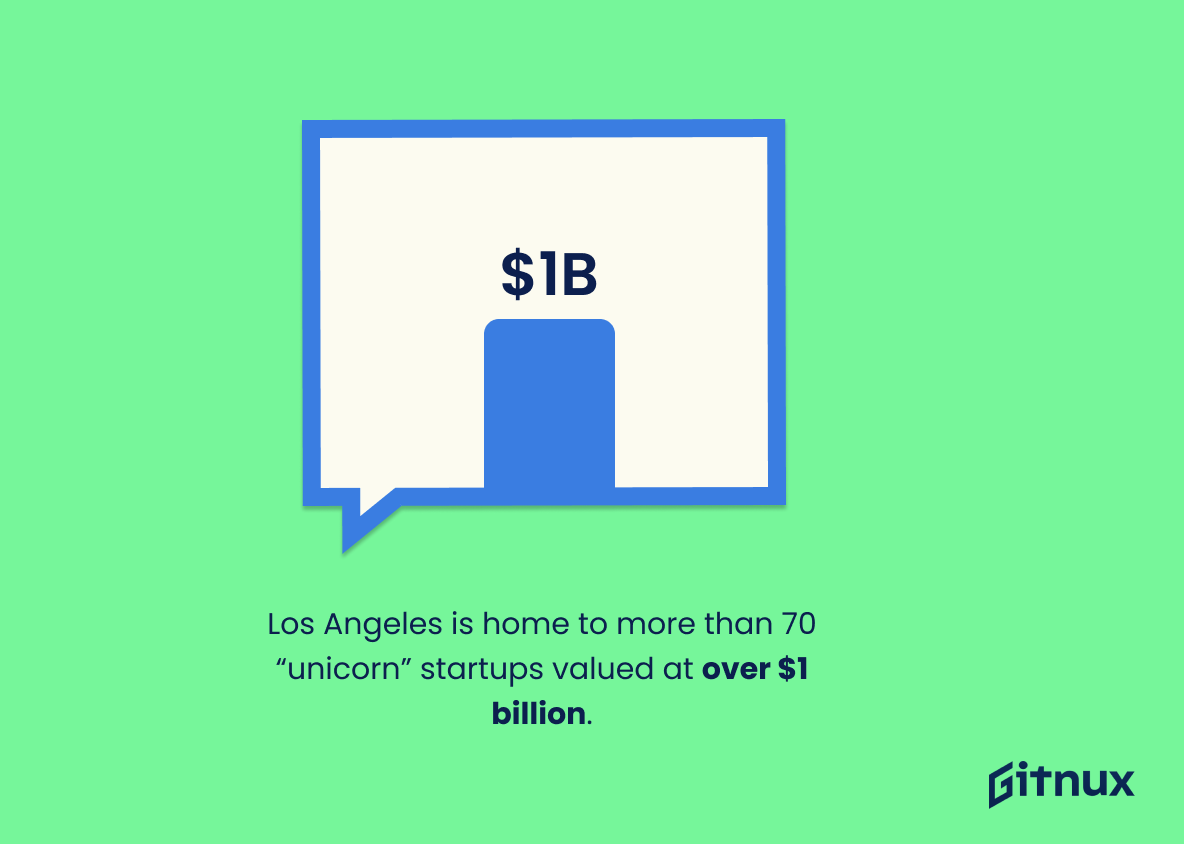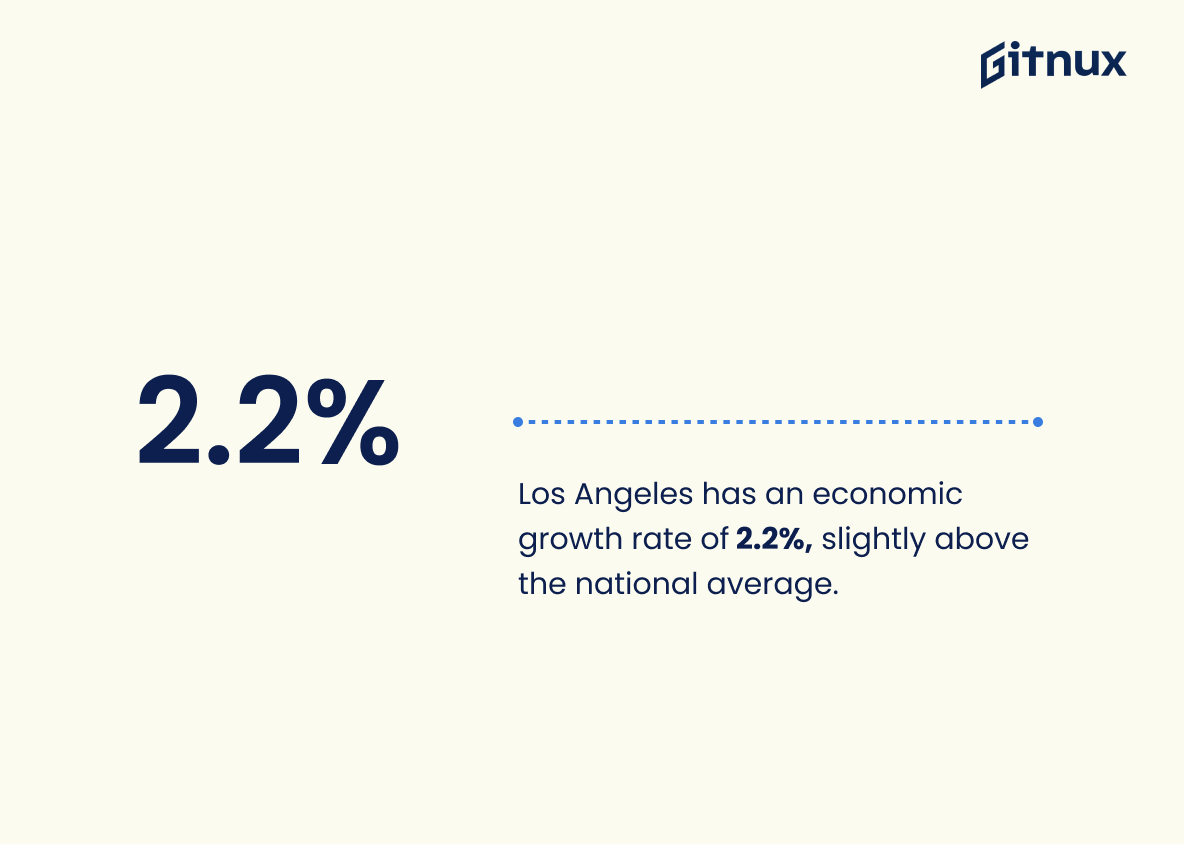Los Angeles is a major economic hub in the United States, with an impressive gross metropolitan product (GMP) of approximately $1.1 trillion and a median household income of $64,251. Despite having an unemployment rate of 9.9%, Los Angeles has many thriving industries that contribute to its economy such as health care and social assistance, information technology, small businesses, entertainment industry worth over $504 billion dollars annually , international trade creating 161 thousand direct jobs in Los Angeles County , tourism generating more than 36 billion dollars in total economic impact for 2018 , real estate contributing 40 billion dollars to the local economy , education sector adding 2.2 billion dollar contribution to the local economy aerospace & defense industry providing 82 billions dollar contribution to the local economy creative Economy producing 612 thousands job opportunities 70 “unicorn” startups valued at over 1 Billion Dollars advanced transportation sector employing 54 thousands individuals . The fashion Industry alone employs 46000 people with estimated annual Economic Impact Of 2 point 68 Billion Dollar . With all these factors combined together it’s no surprise that Los Angeles has achieved an above average growth rate of 2.2%.
Los Angeles Economic Statistics Overview
Los Angeles’ unemployment rate is approximately 9.9%.
The statistic of Los Angeles’ unemployment rate being approximately 9.9% is a telling indication of the current economic state of the city. It serves as a reminder that, despite the city’s many successes, there are still many people who are struggling to make ends meet. This statistic is a stark reminder that the city must continue to strive for economic growth and stability in order to ensure that all of its citizens have the opportunity to thrive.
Los Angeles is the center of the U.S. entertainment industry, with an estimated worth of $504 billion.
This statistic is a testament to the immense economic power of Los Angeles. It highlights the city’s importance as the center of the U.S. entertainment industry, and the vast amount of wealth it generates. This figure is a reminder of the immense potential of Los Angeles as an economic powerhouse, and the opportunities it presents for businesses and individuals alike.
The Port of Los Angeles is the busiest container port in the United States, handling nearly 268,000 TEUs in 2020.
The statistic that the Port of Los Angeles is the busiest container port in the United States, handling nearly 268,000 TEUs in 2020, is a testament to the economic might of the city. It speaks to the vibrancy of the Los Angeles economy and its ability to attract and sustain a large volume of trade. This statistic is a powerful indicator of the city’s economic health and its potential for continued growth.
The tourism industry in Los Angeles generated more than $36.6 billion in total economic impact in 2018.
This statistic is a testament to the immense economic power of the tourism industry in Los Angeles. It highlights the fact that the city is a major player in the global economy, and that its tourism industry is a major contributor to its economic success. This statistic is a reminder of the importance of the tourism industry in Los Angeles, and how it can be a major driver of economic growth and prosperity.
Los Angeles has a poverty rate of 17.6%.
The poverty rate of 17.6% in Los Angeles is a stark reminder of the economic disparities that exist in the city. It highlights the need for more resources and support for those living in poverty, as well as the need for more equitable economic policies that can help to reduce the poverty rate.
The creative economy in Los Angeles generates over 612,000 jobs.
This statistic is a testament to the power of the creative economy in Los Angeles, demonstrating the sheer number of jobs it has created. It is a clear indication of the economic impact of the creative sector in the city, and a reminder of the importance of investing in the creative economy.
Los Angeles is home to more than 70 “unicorn” startups valued at over $1 billion.
This statistic is a testament to the economic power of Los Angeles. It speaks to the city’s ability to attract and foster innovative businesses that have achieved the rare feat of being valued at over $1 billion. This is a remarkable achievement and a sign of the city’s potential for continued economic growth.
Los Angeles has an economic growth rate of 2.2%, slightly above the national average.
This statistic is indicative of the fact that Los Angeles is doing better than the rest of the nation when it comes to economic growth. It shows that the city is making strides in its economic development, and is a sign of a healthy and prosperous future for the city.
Conclusion
Los Angeles is a major economic hub in the United States, with an impressive gross metropolitan product of $1.1 trillion and median household income of $64,251. The city’s unemployment rate stands at 9.9%, while its largest industry is health care and social assistance which employs 1.15 million workers. Additionally, 15% of Los Angeles businesses are in the information and technology sector, with over 244 thousand small businesses operating within the county as well.
The entertainment industry has an estimated worth of $504 billion to Los Angeles’ economy; meanwhile international trade creates 161 thousand direct jobs for locals annually – not to mention that tourism generates more than 36 billion dollars each year. Furthermore, 17 percent live below poverty line while 233 thousand individuals work for government-related organizations across LA County alone; real estate contributes 40 billion dollars whereas education adds 2 point two billion into local coffers every year too. Aerospace & defense industries contribute 82 billions whilst creative economy provides 612 thousands job opportunities – plus there are 70 unicorn startups valued at one or more billions here too. Advanced transportation manufacturing offers 54 thousands employment positions alongside 2 point two percent growth rate (slightly above national average). Last but not least fashion business brings 46 thousands people employed along with annual economic impact reaching up to 2 point sixty eight billions US Dollars respectively.
In conclusion it can be seen that Los Angeles boasts a strong and diverse economy driven by many different sectors from healthcare to aerospace engineering – making it one of America’s most important cities economically speaking
References
0. – https://www.www.bls.gov
1. – https://www.www.portoflosangeles.org
2. – https://www.www.bea.gov
3. – https://www.www.discoverlosangeles.com
4. – https://www.datausa.io
5. – https://www.builtin.com
6. – https://www.www.ibisworld.com
7. – https://www.www.otis.edu
8. – https://www.www.worldbank.org
